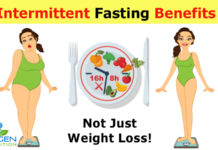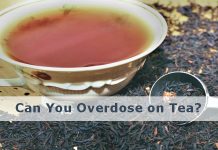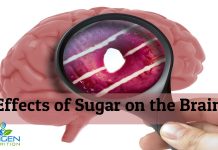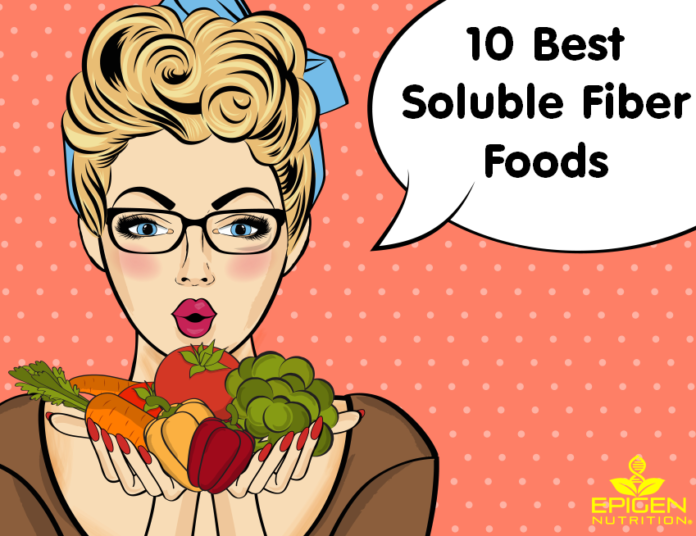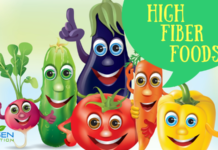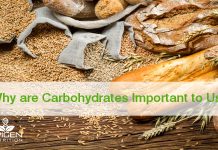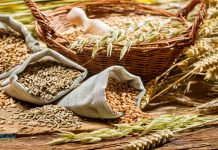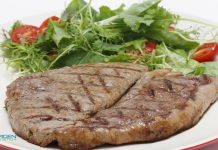Fiber is an indigestible carbohydrate that can be found in plants, and is an extremely important part of a healthy diet.
Even though it’s vital for our gut and general health, most of the western world does not currently eat enough insoluble or soluble fiber foods, and this can lead to a lot of serious health issues down the line.
The recommended daily amount, is 38 grams for men and 25 grams for women, aged 50 or younger.
And 30 grams for men and 21 grams for women, aged 51 or older.
But bear in mind this is for both soluble and insoluble fiber inclusive.
Soluble and insoluble fiber both aid in bulking up your feces and can be utilized as a food source for healthy bacteria in the large intestine.
However, if you have certain digestive issues, you might have to make a choice between the two.
For some IBS sufferers, it’s crucial to consume only soluble fiber; otherwise things could become really uncomfortable.
Soluble fiber drives water into your intestines, facilitating regular bowel movements by softening your stools.
Not only can it increase your feeling of fullness and ease constipation, but it also has the potential to lower your levels of cholesterol and blood sugar.
Here are 10 high soluble fiber foods you need to be including in your diet to boost your fiber intake.
1. Black Beans
In addition to adding a meaty texture to your foods, black beans are a fantastic source of fiber.
One cup (172 grams) contains 15 grams, which is around what the average person consumes daily, or 40–60 percent of the RDA for adults.
Pectin is a type of soluble fiber found in black beans; when in contact with water, it takes on a gummy consistency.
This may prolong your feeling of fullness and delay stomach emptying, allowing your body ample time to absorb the nutrients.
To round out the nutritional profile of these low-calorie, fat-free black beans, they’re also high in protein and iron.
Cooked black beans have 5.4 grams of soluble fiber per three-quarter cup (129 grams).
2. Lima Beans
Lima beans are flat, greenish-white, large beans. They are also known as butter beans.
They mostly consist of carbohydrates and protein, with a trace amount of fat.
Compared to black beans, they have less total dietary fiber, but about the same amount of soluble fiber.
Pectin, a soluble fiber found in lima beans, has been linked to fewer blood sugar increases after meals.
Uncooked lima beans are toxic. Before you eat them, you should soak them and boil them.
Lima beans provide 5.3 grams of soluble fiber per 3/4 cup (128 grams).
3. Avocados
Although they come from Mexico, avocados are now widely consumed.
The most prevalent kind is the Haas avocado.
They are a great source of dietary fiber, vitamin E, potassium, and monounsaturated fats.
Avocados are particularly high in soluble and insoluble fiber.
They have lower concentrations of phytate and oxalate, two antinutrients that might inhibit the absorption of minerals, compared to other common fiber sources.
One-half of an avocado contains 2.1 grams of soluble fiber.
4. Sweet Potatoes
Beta carotene, fiber, B vitamins, and potassium are all found in abundance in sweet potatoes.
The average potato also has 4 grams of fiber, of which nearly half are soluble.
As a result, sweet potatoes can greatly increase your daily intake of soluble fiber.
Your weight management could benefit from soluble fiber, as the production of gut-satiety hormones increases when you eat more of it, which may aid in reducing your overall hunger.
1.8 g of soluble fiber is present per half cup (150 g) of cooked sweet potato.
5. Broccoli
Broccoli is a cool-season cruciferous veggie. The color is typically dark green, but purple variations are sometimes available.
To aid in blood clotting, vitamin K is abundant in this food. It’s also an excellent source of folate and potassium, as well as vitamin C. Additionally, it contains anti-oxidant and anti-cancer qualities.
More than fifty percent of the dietary fiber in broccoli is soluble.
By nourishing the beneficial bacteria in the large intestine, broccoli’s high soluble fiber content helps promote gut health.
These bacteria generate advantageous short-chain fatty acids like butyrate and acetate.
92 grams of cooked broccoli, or half a cup, has 1.2-1.5 grams of soluble fiber.
6. Carrots
Carrots are a popular, tasty vegetable.
Carrots can be boiled or steamed, sliced into salads, or used to make carrot cake.
You may recall hearing as a child that eating carrots will improve your night vision.
Beta carotene is abundant in carrots and is partially transformed into vitamin A.
This vitamin nourishes your eyes, and night vision in particular depends on it.
½ cup of cooked carrots contains 1.1-1.2 grams of soluble fiber.
7. Pears
Pears are crisp and refreshing fruit and include potassium, vitamin C, and antioxidants.
A medium-sized fruit has 5.5 grams of fiber, making them superb types of soluble fiber foods.
Pears contain 29 percent soluble fiber, the majority of which is pectin.
Due to their high levels of fructose and sorbitol, pears can sometimes cause diarrhea.
You might need to limit your intake if you have IBS (irritable bowel syndrome).
1.1-1.5 grams of soluble fiber are present in each medium-sized pear.
8. Figs
Figs are very nutrient-dense, containing vitamins B, magnesium, calcium, and potassium.
Soluble fiber, which is present in dried and fresh figs, helps to slow digestion and increase the absorption of nutrients.
According to anecdotal reports, dried figs have long been used as a natural treatment for constipation.
While one study discovered that fig paste helped constipated dogs’ bowel movements, there is a dearth of human-based research.
Figs contain 1.9 grams of soluble fiber in every one-fourth cup (37 grams).
9. Oats
A versatile and healthful grain, oats are widely available.
They can be used to make bread, flapjacks, scones, fruit crumbles, and breakfast cereals.
Beta-glucan, a soluble fiber, reduces LDL cholesterol and improves blood sugar control.
It is suggested that consuming 3 g of beta-glucan daily can lower your risk of developing heart disease.
100 grams of dry oats have 10 grams of fiber. 5.8 grams are insoluble and 4.2 are soluble, with 3.6 being beta-glucan.
Additionally, porridge’s distinctively creamy texture is due to beta-glucan.
233 grams of cooked oats contain 1.9 grams of soluble fiber.
10. Flax Seeds
They are incredibly nutrient-dense and can be a fantastic way to increase the nutrient value of your cereals, smoothies, or bread.
You can increase the fiber and protein in your breakfast by adding 1 tbsp. of powdered flax seeds to your porridge. They are also among the greatest plant-based suppliers of omega-3 fatty acids.
If at all possible, let ground flax seeds soak overnight so that their soluble fiber can gel with water to help with digestion.
Whole flax seeds contain 0.6–1.2 g of soluble fiber per 14 g.
Foods that are high in fiber are beneficial to your health.
If you are not used to eating the recommended amounts of soluble fiber foods, introducing too much too soon could possibly cause some abdominal bloating, cramps, and even a bit of intestinal gas.
Try to gradually add a bit more fiber to your diet over a couple of weeks.
This will give your digestive system’s natural bacteria a chance to adapt to the shift.
And don’t forget to drink a load of water.
The best way for the fiber to be able to do its job (pun intended), is to absorb the water you drink, which will result in the stools being bulky and soft.











